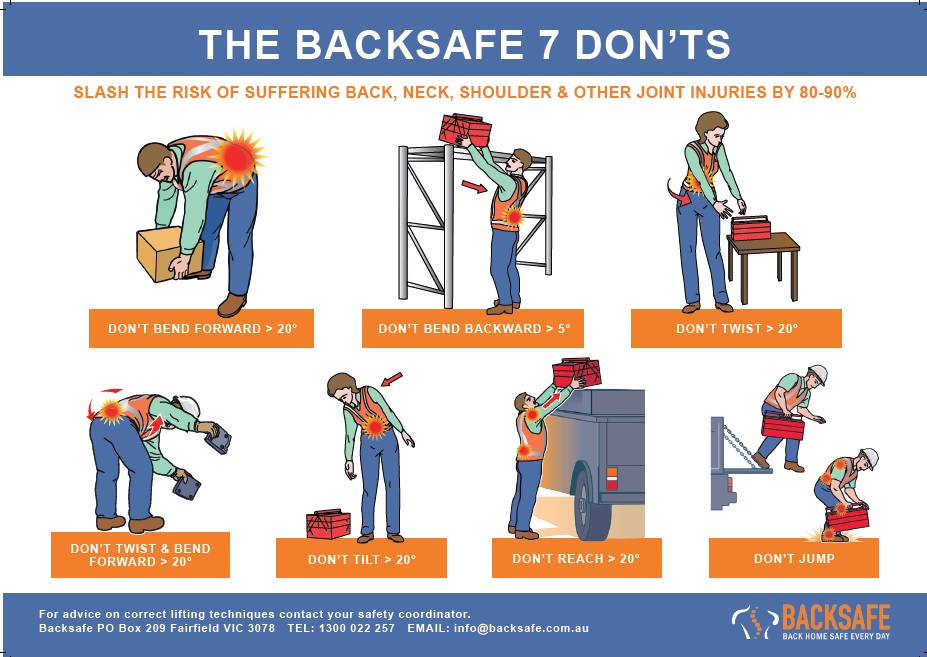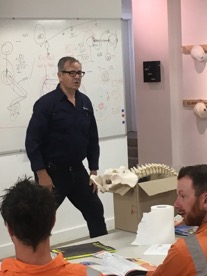Enhancing Patient Handling For Healthcare Workers: How to reduce musculoskeletal disorders
Musculoskeletal disorders (MSDs) pose a growing and substantial challenge in the healthcare industry in Australia. This particularly affects professionals who are regularly involved in patient moving and handling. These MSDs, which include a range of conditions from minor strains, to more severe injuries, can have a significant impact on the health and well-being of healthcare workers.
The physical demands of lifting, moving, and supporting patients, especially those who are unable to assist their own movement, significantly increase the risk of MSDs. Backsafe’s innovative training program provides crucial techniques to assist in avoiding injuries within the healthcare facilities. It’s not just a set of guidelines; it’s a comprehensive approach that equips healthcare workers with a suite of safe and effective techniques.
These techniques are designed not only to protect the healthcare workers, but also to enhance the safety and comfort of the patients being handled. By focusing on practical, real-world applications, Backsafe’s training ensures that healthcare professionals are well-prepared to navigate the physically demanding aspects of their roles. This is crucial in alleviating the risk of injury and promoting a healthier, more sustainable work environment. This focus on both prevention and practical application makes Backsafe’s program an invaluable asset in the ongoing effort to combat the prevalence of MSDs in the healthcare sector.
The Risk of MSD in Healthcare
Healthcare workers face an increased risk of musculoskeletal disorders (MSDs), largely due to the intense physical demands of their roles. These demands often include tasks such as lifting, moving, and repositioning patients, all of which place significant strain on your body. The risk of sustaining MSDs is further compounded in scenarios where patients are incapacitated or unable to actively participate in their movement. In such cases, the entire difficulty of manoeuvring the patient safely falls on the healthcare workers, significantly increasing the likelihood of strain and injury.
The repetitive nature of these tasks in daily healthcare routines can lead to chronic pain or long-term musculoskeletal issues, affecting the workers’ quality of life and work efficiency. This heightened exposure to MSDs not only impacts the physical health of the workers but can also have psychological effects, as the fear of injury can lead to increased stress and anxiety in the workplace. Consequently, the implementation of safe handling techniques becomes not only beneficial but essential for the protection and well-being of healthcare staff along with the patient.
These techniques are essential in ensuring that workers can perform their duties effectively while minimising the risk of injury. They are a key component in fostering a safer, more sustainable working environment in the healthcare sector, where the well-being of the caregiver is as important as the care provided.
Backsafe’s Approach to Safe Patient Handling
Backsafe’s training program is meticulously designed to meet the specific needs of healthcare workers in Australia, emphasising practical, hands-on skills that are essential in their day-to-day operations.
This comprehensive training goes beyond theoretical knowledge, providing interactive and realistic scenarios where staff can practice and master the techniques of safely moving patients. By focusing on real-life applications, the program ensures that healthcare workers are not only informed but are also proficient in implementing these skills effectively. This proficiency is crucial in minimising the risk of injury, both to the healthcare workers and the patients they handle.
The training is structured to cater to various learning styles, incorporating a mix of visual, auditory, and kinesthetic teaching methods to enhance understanding and retention. This approach ensures that every participant, regardless of their learning preference, can fully grasp and apply the techniques taught. The program also emphasizes the importance of ergonomics in patient handling, teaching staff how to optimise their movements to reduce physical strain.
By equipping healthcare workers with this knowledge and these skills, Backsafe’s training not only significantly reduces the risk of musculoskeletal injuries but also contributes to the overall efficiency and safety of healthcare operations. By improving productivity, the number of workers’ compensation claims that healthcare facilities have to pay out is positively reduced.
This dual focus on safety and practicality makes the Backsafe training an invaluable resource for healthcare facilities aiming to maintain a high standard of patient care while ensuring the well-being of their staff.
Benefits of Backsafe Training
Enrolling in Backsafe’s patient moving and handling training brings several advantages:
- Immediate Application of Skills: Workers can utilise their new skills right away, encouraging a safer work environment.
- Safer Working Environment: Understanding the ins and outs of correct patient handling techniques ensures a safer working environment.
- Reduction in Workers’ Compensation Claims: Proper training translates to fewer injuries, which means a decrease in workers’ compensation claims and associated costs.
- Boosted Employee Productivity and Morale: When staff members feel safe and valued, their productivity and job satisfaction improve noticeably.
- Long-Term Financial Benefits: Reduced injury rates lead to lower insurance premiums over time, ensuring a positive return on investment.
Comprehensive Care for Healthcare Workers
On top of ensuring physical safety, Backsafe’s training program is instrumental in enhancing the overall well-being for healthcare workers. This comprehensive training goes beyond mere technical skills, addressing the holistic needs of staff in high-stress medical environments.
The holistic approach demonstrates an employer’s deep commitment to the safety and health of their staff, which is pivotal in building trust and morale within the workforce. Moreover, this commitment to staff well-being often translates into a more positive, engaged workplace culture. When healthcare workers feel valued and protected, it fosters a sense of loyalty and dedication to their roles.
This heightened engagement not only improves job satisfaction but also leads to better patient care, as workers are more motivated and attentive. Backsafe’s training also encourages teamwork and communication among staff, essential components in creating a supportive work environment. By promoting these collaborative values, the training helps build a strong, cohesive community within the workplace, where employees feel connected and supported.
This nurturing environment not only benefits the healthcare workers in their professional lives but also contributes positively to their personal well-being, creating a ripple effect of positivity and care throughout the healthcare facility.
To learn more about how Backsafe can transform your healthcare facility’s approach to patient handling and contribute to a safer, more efficient work environment, please contact Jane Stewart: jane@backsafe.com.au or 0411 838 033




